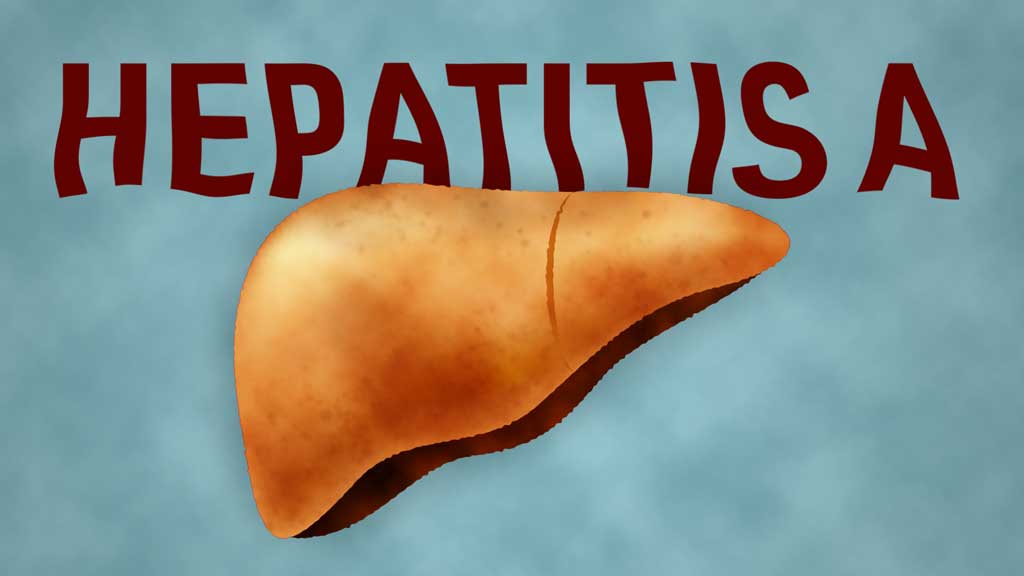Despite being a significant health problem in the 1990s, hepatitis A has become considerably less common in Australia, largely due to the hepatitis A vaccination program that was established for Aboriginal and Torres Strait Islander children in 1999 (AIH 2023).
Nevertheless, it is still important to remain vigilant and practise effective hygiene in order to prevent new outbreaks of this virus from arising.
What is Hepatitis A?
Hepatitis A is an acute viral infection causing inflammation of the liver. It develops upon being infected with the hepatitis A virus (HAV), which is one of the five main hepatitis viruses along with types B, C, D and E (WHO 2019).
Hepatitis A is generally a mild illness, especially in children. However, in severe cases, it might lead to liver failure (DoHaAC 2022). Death is rare (Healthy WA 2020).
The infection is self-limiting, so it generally resolves on its own without treatment. Unlike hepatitis types B and C, it does not cause chronic illness (AIH 2023).
Remember that hepatitis A, B, C, D and E are different illnesses caused by different viruses. While they all cause liver infections, they are not the same and should not be treated as interchangeable (WHO 2019).
For more information on other types of hepatitis, refer to:
How Does Hepatitis A Spread?

Hepatitis A is spread via faecal-oral transmission, which occurs when traces of faeces from an infected person are ingested. This might occur if faeces contaminates food, water, objects or hands (Hepatitis Australia 2020; Better Health Channel 2021).
People who are infected with hepatitis A are contagious for about two weeks prior to symptom onset and at least one week after the illness has resolved (AIH 2023).
The hepatitis A virus is highly contagious and can survive well without a human host. It lasts for several hours on a person’s hands and even longer in room-temperature food. It is also somewhat resistant to heat and freezing (AIH 2023).
Examples of how hepatitis A might spread include:
- Eating food that an infected person prepared without thoroughly washing their hands
- Consuming food or water that has been contaminated by sewerage
- Engaging in oral or anal sex with an infected person
- Handling nappies, linen or towels with traces of faeces on them.
(Hepatitis Australia 2022; Queensland Government 2020)
How Common is Hepatitis A in Australia?
Hepatitis A has become uncommon in Australia due to improved hygiene practices and access to clean water and sewerage (AIHW 2018). However, there are occasionally small outbreaks among remote Aboriginal and Torres Strait Islander communities where there is reduced access to clean water and sanitation (Hepatitis Australia 2022).
Australians are most at risk of contracting hepatitis A when travelling to developing countries (Hepatitis Australia 2022).
Risk Factors for Hepatitis A
Those who are at increased risk of being infected by HAV or experiencing severe disease include:
- Aboriginal and Torres Strait Islander children who live in the Northern Territory, Queensland, South Australia and Western Australia
- People with certain comorbidities, including chronic liver disease and developmental disability
- People with occupations that increase their risk of acquiring hepatitis A, including:
- People who live, work or care for children in remote Aboriginal and Torres Strait Islander communities
- Early childhood educators and carers
- Carers of people with developmental disability
- Plumbers and sewage workers
- People travelling to areas where hepatitis A is endemic, including certain parts of Africa, Asia, Central America and South America
- People who engage in anal intercourse, including men who have sex with men and people who work in the sex industry
- People who inject drugs
- Inmates.
(AIH 2023)
Symptoms of Hepatitis A

The incubation period of hepatitis A is typically between 15 and 50 days - 28 days on average (AIH 2023).
Some people, particularly children under the age of five, will be asymptomatic (DoHaAC 2022). About 70% of adults experience symptoms (AIH 2023).
Those with symptoms might experience:
- Fever
- Nausea and vomiting
- Loss of appetite
- Fatigue and weakness
- Muscle and joint pains
- Abdominal pain
- Dark urine
- Jaundice.
(Healthdirect 2022; AIH 2023)
Symptoms will generally persist for a few weeks before resolving on their own and most people recover completely. A single hepatitis A infection affords lifelong immunity to the virus, however, people who have experienced hepatitis A are still able to contract other types of hepatitis (Better Health Channel 2023).
Complications of Hepatitis A
About 10% of people will experience a relapse of symptoms but will completely recover (AIH 2023).
In rare cases, hepatitis A may develop into a complication known as fulminant hepatitis, which can lead to liver failure. Fulminant hepatitis has a 60% mortality rate, however, it is more serious in older people (Better Health Channel 2023; AIH 2023).
Diagnosing Hepatitis A
Hepatitis A is diagnosed via a blood test to detect IgM antibodies (AIH 2023).
Treatment for Hepatitis A
There is no specific cure for hepatitis A, so treatment usually involves managing symptoms through:
- Resting
- Eating small meals
- Keeping hydrated
- Avoiding alcohol
- Avoiding medicines that affect the liver (upon consultation with a medical practitioner).
(Better Health Channel 2023)
Preventing Hepatitis A
Hepatitis A Vaccine

The best way to prevent hepatitis A is through vaccination against the hepatitis A virus. Immunisation is recommended for all people in high-risk groups (those listed under the ‘Risk Factors for Hepatitis A’ section above) (Better Health Channel 2023).
Unvaccinated people who have been exposed to the virus are recommended to receive post-exposure prophylaxis within two weeks of exposure, as this can help to prevent or reduce the severity of infection (AIH 2023).
Studies have shown that vaccination is almost 100% effective in preventing hepatitis A infection (AIH 2023).
Under the National Immunisation Program, Aboriginal and Torres Strait Islander children between 12 and 24 months of age in high-risk areas are eligible for free immunisation (Better Health Channel 2023).
You can find more information about the hepatitis A vaccine in the Australian Immunisation Handbook.
Other Prevention Strategies
- Thoroughly washing hands with soap and hot running water before handling food, after using the toilet, after handling used condoms or nappies and after having contact with the anal area of another person
- Practising safe sex
- Regularly cleaning bathrooms and toilets, particularly toilet seats, handles, taps and nappy change tables
- Boiling drinking water if it has come from an untreated source (e.g. a river)
- Taking extra caution and considering vaccination when travelling to areas where hepatitis A is endemic.
(Better Health Channel 2023)
Test Your Knowledge
Question 1 of 3
What is the incubation period for hepatitis A?
Topics
References
- Australian Immunisation Handbook 2023, Hepatitis A, Australian Government, viewed 16 September 2024, https://immunisationhandbook.health.gov.au/vaccine-preventable-diseases/hepatitis-a
- Australian Institute of Health and Welfare 2018, Hepatitis A in Australia, Australian Government, viewed 16 September 2024, https://www.aihw.gov.au/getmedia/6f006a38-4d3d-4926-b663-28f7b67e1d9f/aihw-phe-236_HepA.pdf.aspx
- Better Health Channel 2023, Hepatitis A, Victoria State Government, viewed 16 September 2024, https://www.betterhealth.vic.gov.au/health/conditionsandtreatments/hepatitis-a
- Department of Health and Aged Care 2022, Hepatitis A, Australian Government, viewed 16 September 2024, https://www.health.gov.au/diseases/hepatitis-a
- Healthdirect 2022, Hepatitis A, Australian Government, viewed 16 September 2024, https://www.healthdirect.gov.au/hepatitis-a
- Healthy WA 2020, Hepatitis A, Government of Western Australia, viewed 16 September 2024, https://www.healthywa.wa.gov.au/Articles/F_I/Hepatitis-A
- Hepatitis Australia 2022, Hepatitis A, Hepatitis Australia, viewed 16 September 2024, https://www.hepatitisaustralia.com/hepatitis-a
- Queensland Government 2020, Hepatitis A, Queensland Government, viewed 16 September 2024, http://conditions.health.qld.gov.au/HealthCondition/condition/14/217/72/hepatitis-a
- World Health Organisation 2019, Hepatitis, WHO, viewed 16 September 2024, https://www.who.int/news-room/q-a-detail/hepatitis

